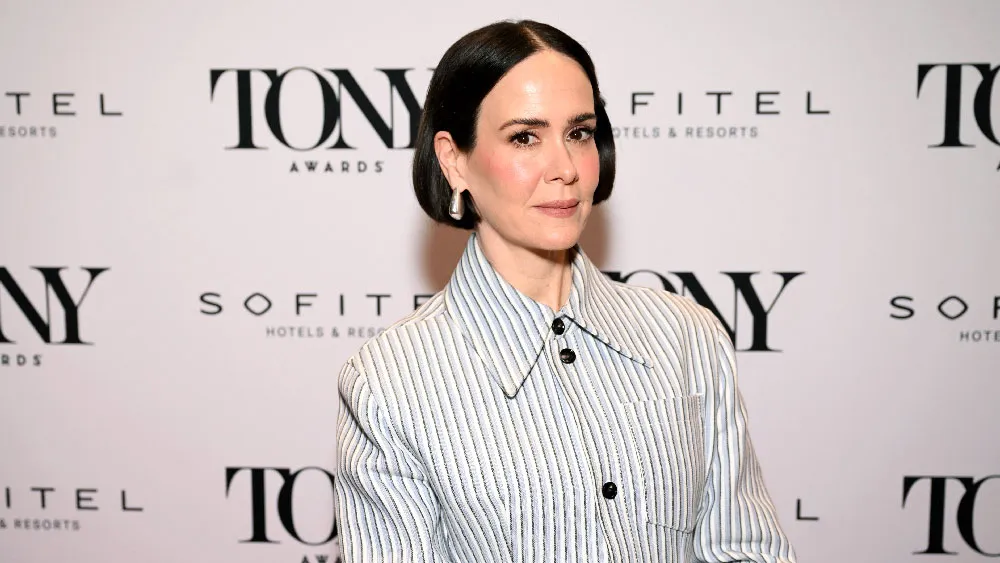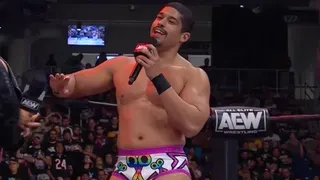March 30, 2010
Liberace Museum, steeped in the past, looks to the future
Jim Halterman READ TIME: 8 MIN.
When Liberace appeared in the New York's Persian Room in 1945, a critic from Variety wrote: "Liberace looks like a cross between Cary Grant and Robert Alda. He has an effective manner, attractive hands which he spotlights properly and, withal, rings the bell in the dramatically lighted, well-presented, showmanly routine. He should snowball into box office."
That proved to be an understatement. By 1955 Liberace (or to use his full name Wladziu Valentino Liberace) could boast a weekly television audience of 20 million viewers and a salary of $50,000 for one week in Las Vegas at the Riveria Hotel. By the 1970s his Vegas appearances were netting him $300,000 a week.
Vegas became synonymous with Liberace, even in death. Today his fans flock to the Liberace Museum, which Liberace started in 1979. Liberace's many cars, capes, jewelry, awards, photographs and other possessions can be viewed at the Vegas landmark.
Glitz and glamour
That wardrobe, according to his obituary in the New York Times (February 5, 1987), "eventually filled rack after rack in his mansions and included a silvery plum lame cape with an eight-foot train of pink feathers, a $300,000 Norwegian blue-fox cape with a 16-foot train, and a sequined drum-major's uniform, complete with hot pants."
The obit continued: "'Through exaggeration, I could get my point across much more easily,' he wrote in an autobiographical picture book, 'The Wonderful Private World of Liberace,' (published in 1986). ''Don't wear one ring, wear five or six. People ask how I can play with all those rings, and I reply, 'Very well, thank you.' ''
After 30 years at the same location, the Museum has many wheels in motion with hopes of gaining some of its past glory. Also on the horizon (which could definitely help that mission) is the potential motion picture on the life of Liberace being planned by director Steven Soderbergh that Michael Douglas as Liberace and Matt Damon as his scorned lover Scott Thorson.
EDGE's Jim Halterman ventured out to Las Vegas and talked to The Liberace Foundation President Jack Rappaport about the past, present and future of the museum and the legacy of its namesake.
EDGE: What is it about Liberace and Vegas that makes them fit so well together?
Jack Rappaport: The glitz. The glamour. Showmanship. I mean, come on, think about it. Going back to the early, early days when the performers first started coming. He was actually one of the early ones because he opened up the Riviera. The showgirls, the headdresses, the pizzazz and then the quality of the performers from the Rat Pack, Frank Sinatra. They go hand in hand, really.
EDGE: People always embraced Liberace. Do you think it's solely because of his larger-than-life personality?
JR: I think that and the fact that he was so humble. I grew up here in Vegas. I saw Elvis. I saw Barbra. I was at the opening of The Jacksons, The Osmonds. For some reason, I never saw Liberace. I think it's coincidental as heck. Here I am past chair of the Board of Directors and President of the organization who is taking it into the 21st Century, but I never had the opportunity (to see Liberace live).
From what I understand when he was on stage and he performed you thought he was performing just for you. He was so gracious. He was so human. He was so approachable. I talked to a real estate developer the other day and he told me he used to own a pet shop Liberace frequented. Liberace took a liking to him and the next thing you know Liberace - or Lee, anyone who knew him called him Lee - was sending all these customers to buy their dogs and animals from the owner. Then one day Lee stopped by the store with a new Rolls and asked the owner, 'Do you want to take a ride with me?' and they just drove around Vegas. He was an icon, but he was also human. I think that's what he came through from his television - that human connection. You have to remember that he skipped radio. He went right to television. He just connected with his audience. And he was innovative. He was the first to fly (on a Vegas stage), he had the synchronized dancing waters long before the Bellagio was even considered, and he had the costumes. He opened up doors for all the other performers who came along.
Story continues on the following page.
Watch this clip of Liberace's video and opening of his Las Vegas act at the Riveria Hotel in 1981 (look for Scott Thorson).
A different time
EDGE: And even if people questioned whether he was gay or not, it never held him back, right?
JR: Back then, it was a different time. It wasn't something you publicized. I don't think they (his audience) cared. And I don't think even when they found out they cared. There are stories about how wives would drag their husbands to the show, only to see the men applauding the loudest and giving Liberace a standing ovation at the end. These were truck drivers, very straight men; but they just accepted him for what he was and who he was, which was a phenomenal human being and an unbelievable showman.
EDGE: There has been a lot of talk about the movie coming up to be directed by Steven Soderbergh and starring Michael Douglas (as Liberace) and Matt Damon (as Scott Thorson). What do you know about it?
(Note: according the Times obit: "In 1982, Scott Thorson, who had been his chauffeur, bodyguard and companion for five years, filed a $113 million lawsuit in Los Angeles Superior Court, asserting that the pianist had broken financial promises to him. The suit was settled last month for $95,000.")
JR: We haven't heard from them (the filmmakers) as of yet. I believe the movie is going to happen. I think the credibility was given it when Michael Douglas, pardon the pun, came out and said, 'I'm going to play Liberace.' When an actor goes and 'outs' himself by giving an interview and going on record that he is going to portray a role, it gives it a lot more credibility. (But) from the Foundation's perspective, even though it's going to be a Soderbergh movie, to give it credibility they're going to have to show Liberace's showmanship. Why are these two individuals (Liberace and Thorson) suing each other -- because of their relationship? Does that make the movie worthy? I don't think so. They're going to have to talk about Liberace and how talented he was and who he was. And from the Foundation's perspective, that's a good thing. I've had people say, 'Well, aren't you concerned about how they're going to spin the movie?' Absolutely not. It was a fact of life and they still have to portray Liberace as Liberace or why else would anyone go? I'm all behind it. The good thing is it will get some national exposure.
EDGE: You're also doing some fine-tuning of the Liberace Foundation. Can you tell me about that?
JR: The Foundation started three years prior to the museum. He started the Foundation in 1976 so that tells you his love and admiration for fostering the performing arts and giving scholarships. Scholarships to date are approximately 5.8 million dollars to 2700 students at 120 different institutions. The Foundation has a multi-purpose mission primarily with the scholarships and helping those students for the performing and creative arts.
What we're looking at is restructuring to keep up with the times and to go into the future and restructuring both the application process and the reporting process. We're trying to make use of the Internet and uploading and reporting processes just to broaden it. The other aspect of broadening it is we still want to always give to the aspiring students who have talent and often talent that might go to schools like Julliard, Eastman or Peabody, but we also want to make available to that dubious student maybe not currently a student but someone like a Liberace that has to be discovered. [The Foundation] has been going for so long and it's worked for so long and it's phenomenal. We also want to develop an alumni outreach program so we can keep in touch with the alumni, those who benefited and maybe giving back because they were Liberace scholars. That's what the power of the Internet can do today. It's just a matter now of reaching out whether it be to University interns, volunteers or paid staff to put together all of this and start archiving all this material and reaching out to them.
EDGE: During the tour of the museum, there was mention of moving the museum closer to the Strip. What's going on with that?
JR: We'll always keep with Liberace's mission that the museum be available to the locals and be local-friendly, but why wouldn't we want to avail ourselves to the tremendous tourism that Las Vegas has today? It's a necessity, too. Years ago, there were upwards of over 450,000 to the museum a year, but back then there was nothing to do on the Strip. You'd lay in the sun -- you didn't even have a fashion mall to go shopping. That was it. You went to Death Valley, the Hoover Dam or the Liberace Museum. Fortunately for Vegas, the city has become an adventure land in and of itself. (But for the Museum), it has been a challenge...With all these attractions on the Strip and in Vegas in general, we just don't get the traffic to keep us going to maintain a museum, to preserve and restore the collection and keep it in the condition it should be in. We have money but we don't have that much money. We don't have Liberace to do another performance and then say 'Okay, here's another bucketful of money for ya!'
For more information on the Liberace museum and Liberace Foundation, go to http://www.liberace.org.
Classical Liberace: watch this clip of Liberace performing a medley of selections from classical piano concertos and solo pieces:
Jim Halterman lives in Los Angeles and also covers the TV/Film/Theater scene for www.FutonCritic.com, AfterElton, Vulture, CBS Watch magazine and, of course, www.jimhalterman.com. He is also a regular Tweeter and has a group site on Facebook.





